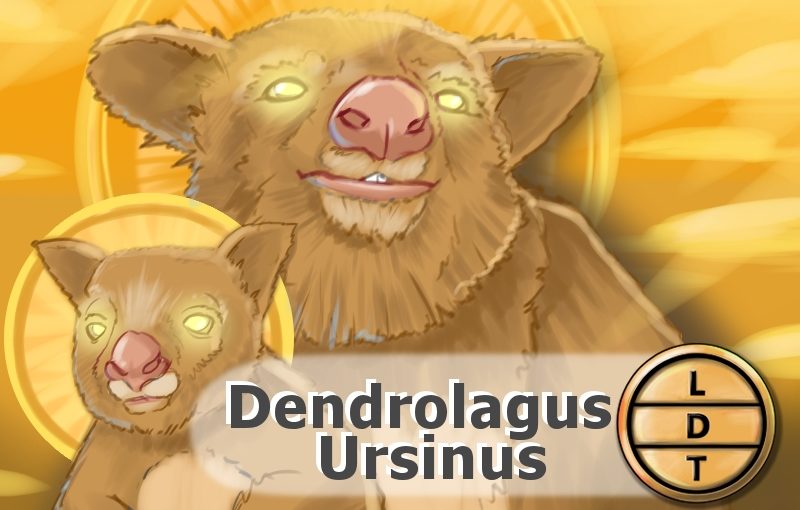“…and today we’re talking about Australia’s version of a monkey, which is of course a marsupial. Way to play to the stereotypes, Australia. I guess there’s no improving on a classic.”
Imagine you’re high up in the rainforest canopy, munching on some of your favorite foliage when all of a sudden, you hear the rustle of some leaves and the snap of a twig. You wheel around to find that a python, with cold, steely eyes has slithered into your domain. You act quickly and nimbly run away to the edge of the branch until there is no where else to go. The python, undeterred, decides to go out on a limb in the hopes of scoring a meal. What would you do? What could you do? Well, there’s arboreal mammal that would not be out of options in such a scenario. But bold and daring tactics are exactly the qualities a tree denizen needs to make it Life, Death, and Taxonomy.
Measure Up
Length – 143 cm (4.6 feet)- How many tree kangaroos go into to the height of Puncak Jaya, the highest elevation in New Guinea (4,884 m or 16,024 ft high)? Hint: Puncak Jaya is the tallest island mountain on earth. Glaciers on the mountain’s slopes are rare examples of equatorial glaciers. Answer: 3,560 Tree Kangaroos
Weight – 7 kg (15 lb) – Papua New Guinea is one of the most culturally diverse countries on the planet and has many known languages (852). If each one of these, languages was manifested into a physical object that weigh one pound, how many tree kangaroos would go into the total weight of all of these one pound languages combined? Hint: Papua New Guinea has four official languages including English, Hiri Motu, Tok Pisin, and Sign Language. Answer: 57 Tree Kangaroos.
Major Fact
The tree kangaroo is specially designed to live the arboreal lifestyle.
- They have curved claws similar to a sloth that helps them hook onto branches.
- Other tree dwelling animals that have no claws, like apes and monkeys, need thumbs and powerful grips to get around.
- Curved claws allow animals to grip and hand with no thumbs at all.
- They also have incredible dexterity in their paws. The only other thumb-less mammal with similar dexterous ability is the raccoon.
- However, tree kangaroos have powerful forelimbs that allow them the climb with ease.
- You can tell just by looking at them that they have yoked shoulders under their plush fur.
- They climb by wrapping their forelimbs around tree trunks and pushing up with their back legs.
- Unlike their ground dwelling kin, Tree Kangaroos don’t have proportionally large legs.
- Instead, their arms and legs are around the same size and their heft has a lot of upper body strength.
- The anatomical arsenal that completes the ensemble is there long heavy tail.
- When you see a Tree Kangaroos walk along the ground, the awkwardly hunch forward and hop around.
- This is because their tails are weighted to center their body weight, allowing them to balance on branches that would be too thin for other animals.
- Tails are usually a half a foot longer than their body length.
- Not prehensile
- Here’s a video where you can see a Tree Kangaroos balancing on a thin rope.
Here’s where the fact get’s major.
- They are capable of making daring leaps from one tree to another and from a tree to the ground. And their bodies are specifically designed to help make this possible.
- Tree Kangaroos have been recorded leaping from one branch to another branch 9 meters (30 ft) bellow.
- They have specially padded paws to help soften the landing and absorb some of the impact the the crumple zone on a family sedan.
- When they are in a bind, like being cornered by a predator, and there is no viable branch to leap to, they will jump out of the tree to the forest floor.
- They can jump as many as 18 meters (59 ft) to the ground.
- Their bodies are plush with dense, fluffy fur that also absorb impact and allows them to hit the ground without injury.
- They even look like stuffed animals.

